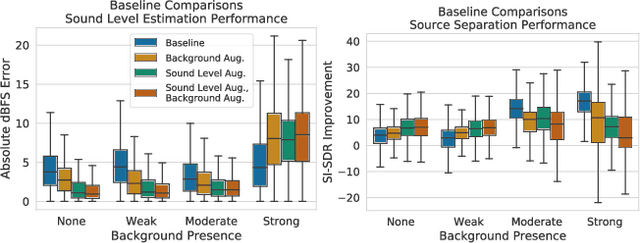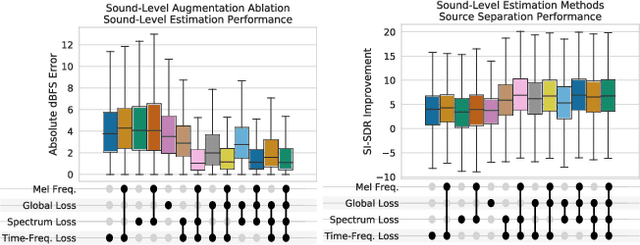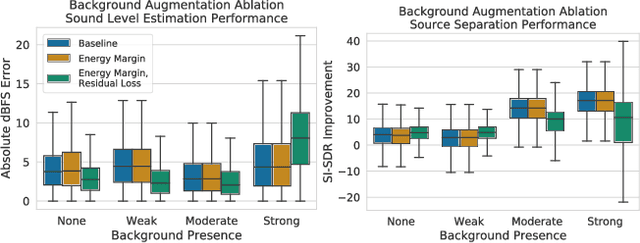Weakly Supervised Source-Specific Sound Level Estimation in Noisy Soundscapes
Paper and Code
May 06, 2021


While the estimation of what sound sources are, when they occur, and from where they originate has been well-studied, the estimation of how loud these sound sources are has been often overlooked. Current solutions to this task, which we refer to as source-specific sound level estimation (SSSLE), suffer from challenges due to the impracticality of acquiring realistic data and a lack of robustness to realistic recording conditions. Recently proposed weakly supervised source separation offer a means of leveraging clip-level source annotations to train source separation models, which we augment with modified loss functions to bridge the gap between source separation and SSSLE and to address the presence of background. We show that our approach improves SSSLE performance compared to baseline source separation models and provide an ablation analysis to explore our method's design choices, showing that SSSLE in practical recording and annotation scenarios is possible.
 Add to Chrome
Add to Chrome Add to Firefox
Add to Firefox Add to Edge
Add to Edge